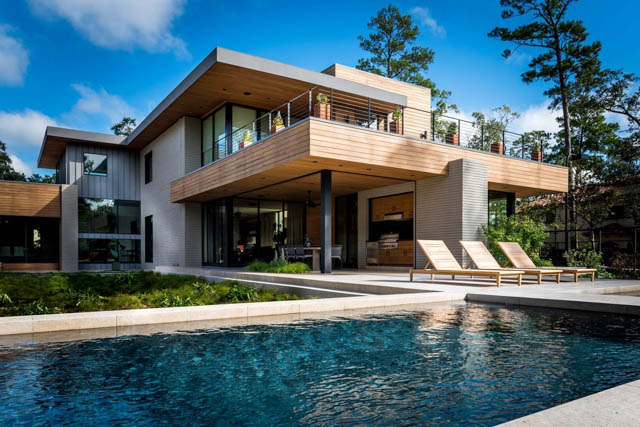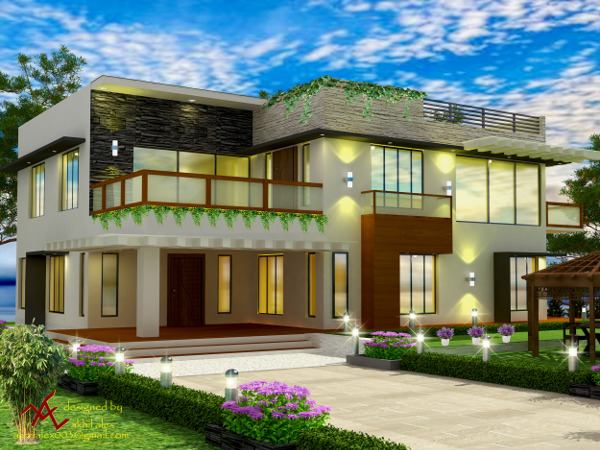Exactly How Residential Architects Develop Personalized Houses for each Lifestyle
The procedure by which household designers layout tailored homes is a nuanced interplay of recognizing client demands and equating those understandings right into functional space. Through thorough assessments and the usage of style tools, engineers capture the significance of their customers' lifestyles, making certain that each home shows individual values and ambitions. This collaborative technique expands beyond first concepts, including cutting-edge technologies and lasting techniques to enhance daily living. As we discover the intricate actions associated with this transformative process, a deeper recognition for the engineer's role in forming unique environments begins to arise.
Understanding Customer Demands

Effective interaction is critical in this process. Designers should motivate customers to verbalize their way of livings, household dynamics, and future ambitions, ensuring that the style mirrors their distinct identification. By employing devices such as questionnaires, interviews, and aesthetic surveys, designers can collect valuable understandings into the client's vision.
In addition, understanding the context in which a home will exist is crucial. Architects have to think about factors such as the website attributes, regional environment, and cultural impacts that can influence the design. This alternative strategy allows for the development of rooms that are not just aesthetically pleasing however lasting and additionally practical.
Ultimately, a deep understanding of client needs allows engineers to develop customized homes that improve the lifestyle for their passengers, cultivating a feeling of belonging and convenience within their living environments.
Design Process and Partnership
The style process in residential design is a dynamic interplay of creativity and partnership, where engineers, clients, and different stakeholders function very closely to bring a vision to life. This iterative trip generally begins with a series of meetings to establish a detailed understanding of the customer's ambitions, choices, and way of living demands. During these discussions, architects gather essential info, enabling them to conceptualize designs that straighten with the customer's vision.
Complying with the preliminary appointments, the design stage evolves via illustrations, 3D models, and architectural makings. This aesthetic communication acts as a device for designers to existing concepts, while also welcoming customer feedback, guaranteeing that the final layout resonates with their assumptions. Efficient collaboration with designers, service providers, and interior designers is essential during this phase, as it guarantees that all useful elements of the project are flawlessly incorporated.

Incorporating Lifestyle Elements
Integrating way of life aspects right into domestic design is important for developing spaces that truly reverberate with the citizens. residential architecture homes. This procedure begins with understanding the unique demands, choices, and everyday routines of the homeowners. Engineers involve in detailed discussions to reveal how the individual or family members utilizes their space, whether for entertaining visitors, going after hobbies, or looking for silent resort
Once these understandings are gathered, architects can customize design attributes that enhance day-to-day experiences. For circumstances, open floor strategies may be made for households that prioritize togetherness, while dedicated work spaces can be integrated for those that work from home. Outdoor locations, such as patios or yards, can be stressed for families that appreciate outdoor tasks or entertaining.
Additionally, versatility is a key consideration; multi-functional rooms permit flexibility as lifestyles progress over time. Customized storage space options can additionally be incorporated to satisfy details organization requirements, ensuring that the home continues to be clutter-free and practical. Inevitably, by thoughtfully weaving way of life aspects right into the building fabric, household architects produce useful site tailored homes that not just fulfill aesthetic wishes yet additionally substantially boost the lifestyle for their clients.
Sustainable and Smart Design
Wise and sustainable style progressively plays a crucial duty in residential architecture, as property owners seek to reduce their ecological impact while enhancing their living experiences. Architects are now integrating environmentally friendly materials, energy-efficient systems, and ingenious innovations to develop homes that not only satisfy visual needs yet additionally offer the world.
Integrating sustainable energy sources, such as solar panels and wind turbines, allows homeowners to harness natural resources, considerably decreasing reliance on traditional power grids. Smart home technologies better boost sustainability by optimizing power use via automated systems that control illumination, heating, and air conditioning based upon occupancy and preferences.
In addition, the usage of sustainable structure products-- like reclaimed timber, bamboo, and reused steel-- promotes a round economic situation, decreasing waste and resource intake. Designers additionally highlight passive layout principles, ensuring homes are oriented for optimum natural light and air flow, consequently minimizing the demand for synthetic heating and air conditioning.
Along with environmental benefits, wise and sustainable style contributes to the total comfort and health and wellness of residents. By focusing on indoor air high quality and natural environments, architects produce rooms that foster health, allowing house owners to thrive attuned to their setting.
Completing and Applying Plans
Settling and applying plans is an essential phase in the property style process, where the vision of a personalized home starts to appear. This stage involves careful focus to information, ensuring that every aspect of the style is specifically expressed and ready for construction. residential architecture homes. Designers team up very closely with customers to evaluate final plans, attending to any kind of last-minute adjustments or issues, while ensuring that all aspects align with the house owner's way of life requirements
As soon as strategies are wrapped up, designers prepare detailed building papers, consisting of in-depth illustrations and specs that function as a blueprint for builders. These files describe materials, finishes, and installation approaches, giving quality for service providers and subcontractors. Furthermore, protecting required authorizations and adhering to local building ordinance is important, as it guarantees compliance and smooth task execution.
Efficient communication is important throughout this phase. Routine updates and discussions with builders aid to minimize possible problems before they emerge. By promoting a joint setting, designers can guarantee that the execution lines up with the initial vision. Eventually, this important phase changes ideas into fact, laying the foundation for a home that mirrors the distinct lifestyle and choices of its residents.
Conclusion
In final thought, property designers play a critical function in crafting personalized homes that provide to varied way of livings. Via thorough understanding of customer demands, joint layout procedures, and the integration of lifestyle elements, engineers make certain that each home mirrors specific choices.
The process by which domestic designers design customized homes is a nuanced interplay of recognizing customer demands and equating those insights into functional living spaces. Via thorough consultations and the usage of layout tools, architects capture the significance of their customers' way of lives, guaranteeing that each home reflects individual worths and goals. Architects need to urge clients to articulate their way of livings, family members dynamics, and future aspirations, making certain that the style reflects their one-of-a-kind identification.The design procedure in property click this architecture is a vibrant interplay of creativity and cooperation, where architects, customers, and different stakeholders work very closely to bring a vision to life - residential architecture homes. With meticulous understanding of customer needs, joint design procedures, and the integration of way of living go to the website aspects, engineers make sure that each home reflects private choices